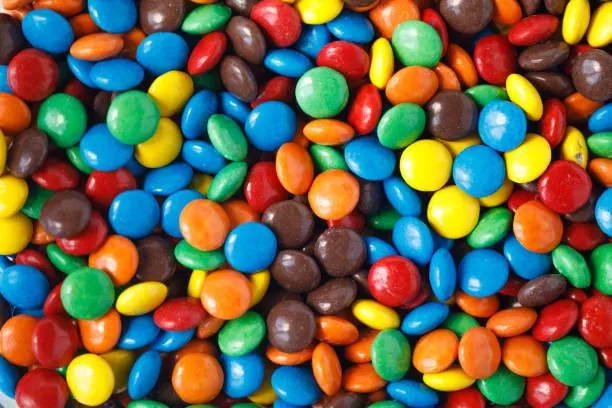
Not all calories are equal, but what does this mean...
“An analysis of 175 countries showed that when you look for the cause of type 2 diabetes, the total number of calories you consume is irrelevant. It’s the specific calories that count. When people ate 150 calories more every day, the rate of diabetes went up 0.1 per cent. But if those 150 calories came from a can of fizzy drink, the rate went up 1.1 per cent. Added sugar is 11 times more potent at causing diabetes than general calories”(1)

Can it really be true that not all calories are created equal? How so?
All calories are not created equal, in the sense of how they are accessible to the body, or how much fuel a food actually yields. Mainly because foods are not all digested the same way, and because of what they're packaged in. It is the types of foods that "count" not just how many calories they contain, because this also affects how the calories are accessed and used in the body. The total calories available, the rate of digestion, the accompanying enzymes and nutrients and macronutrients and fibre all affect the final result.
What is a calorie anyway? A calorie is a way to measure a unit of "energy". (Specifically how much energy it takes to raise the temperature of a gram of water by a degree. Calories are measured using a "Bomb Calorimeter" which can calculate how much energy is "locked up" in a food, however in the body the availability of this "locked up energy" is dependent on the structure and content of the food and how it was prepared, your digestion and how much energy can be extracted and then used.
For example if you eat a apple believed to be 90 calories this is not going to be the same as eating 90 calories worth of chocolate. The apple is going to provide you with more nutrients and fibre, while containing no refined sugars, saturated fats or preservatives. And foods that contain cellulose (fibre in fruit) which is undigestible for humans like in the case of sweetcorn kernel or celery means less calories are available. Chocolate contains: refined foods, as sugar mainly, saturated fats, usually flavouring and additives. And the glycaemic index and load of food relate to the rate glucose is broken down which affects the blood sugar levels, and is not only dependent on the amount of calories. It's much easier for your body to get to all the sugars in chocolate or other confectionary than it is in an apple... or other whole foods packaged up with fibre or protein or that are harder to digest. And this is observed especially in the case of soft drinks as mentioned above. These calories are very "available" from sugars with almost no digestion required and can impact the body's blood sugar levels.
Some believe that counting calories is the way to go in terms of weight loss and preventing disease, and there a number of fad diets out there supporting this. However the source of your calories is most important, alongside your eating habits. It's important to consider where your food comes from (natural or processed) and where the calories you consume are coming from?
Is it highly processed or has it come directly from nature? Is it laden with chemicals and preservatives? Does it contain refined sugars or trans fats? These are all questions we should be asking ourselves about our food. Simply counting calories (and a low calorie diet) MIGHT make you lose some weight but will you be healthy on the inside? Probably not, and the sad news is you usually don’t sustain the weight loss nor do you only lose fat. Putting yourself in calorie deficit without the right macronutrient balance and micronutrient intake can lead to muscle wasting.
More often than not you lose significant muscle, and limited fat when you are eating too little, especially if you are eating empty calories, dehydrated and worse still because your body is stressed by the starvation or lack of nutrients and essential fuel, the type of food you are eating can activate fat storage, or slow your metabolism down, so you may end up with dangerous internal visceral fat, despite “weight” loss.
Meal companies are trying to make a name for themselves by promoting “low calorie” convenient foods or shakes that will aid in weight loss. In reality you would be better off by eating more calories but from different sources (like real nutrient dense and healthy food). Weight loss (in fat and centimetres) can happen from switching to healthy and wholesome foods, often you are able to eat more food but less calories, and feel fuller. There is something called vanishing caloric density in junk food which means you can eat loads of calories but not feel full... think cheese puff chips that are like eating air, but high in calories.
A great real life example that highlights just how different calories can be is a study done by Damon Gameau in That Sugar Book (2). He embarked on a two month experiment where he was to consume 40 tsp of sugar a day (the average for an Australian adult). His results were outstanding. He went from eating 2300 calories/day from vegetables, fruit, meat and dairy to eating still 2300 calories a day but sourced from vegetables, fruit, meat, dairy and 40 tsp of sugar that will hidden in apparently healthy foods (like yoghurt, breakfast cereal, fruit juices, muesli bars etc.) These were his results:
1. His liver health decreased dramatically.
2. His liver and blood were laden with fat.
3. He gained nearly 10kg.
4. He put on 10cm of fat around his waist (the dangerous visceral fat).
5. His moods were greatly affected and he would often crash mid-afternoon with no energy.2
To put it in short terms, he was on his way to developing fatty liver, type II diabetes and heart disease. It only took a month to dramatically change his health for the worse… and all it took was hidden sugar in processed food.
This all happened to him just by eating so called ‘healthy foods’. Foods that we wouldn’t even imagine to be high in sugar. It’s scary how much more so people who eat a diet of predominately junk food items and sweets are at risk of these diseases and side affects are. A further consideration is that sugar consumption disrupts our microbiome, this eliminates protective mechanisms against obesity and diabetes. Western diets high in sugars reduce the number of Th17 inflammatory cells in the guts of mice, setting off a chain of events that lead to metabolic diseases, prediabetes, and obesity. (3)
Now we start to see why our population has a 2 in 3 adult obesity rate.
Now I will put in a caveat here, and that is that not all bodies are the same and some people genetically may be more susceptible to different diets, and weight gain than others and this can be a contributor to obesity.(4)
What can you do about it? Start paying attention to the foods you are eating and where they come from. As much as you can shop for whole food and cook at home.
Focus on eating whole foods, because the calorie availability is less but the nutrient availability is more. The presence of protein and fibre can affect digestion time, not only does this affect calorie availability, when you eat these foods you also feel fuller for longer, which can prevent overeating. Consider combining protein with carbs at meals to lower the glycaemic load of the meal. (A simple example is egg or peanut butter on toast instead of jam or nutella). Also aim for more complex carbohydrates for the same reason, a chicken and vegetable stirfry with brown rice will have a lower glycaemic load than one with white rice, and generally avoid very refined carbs like soft drinks, cakes or even burger buns.
References:
1.Lustig, R. (2012). Fat Chance: The Bitter Truth About Sugar. Fourth Estate.
2. Gameau, D. (2015). That Sugar Book. Pan Macmillan Australia.
3.https://neurosciencenews.com/sugar-microbiome-obesity-21324/
4. Yeo, Giles. 2018. Why calories don't count.

